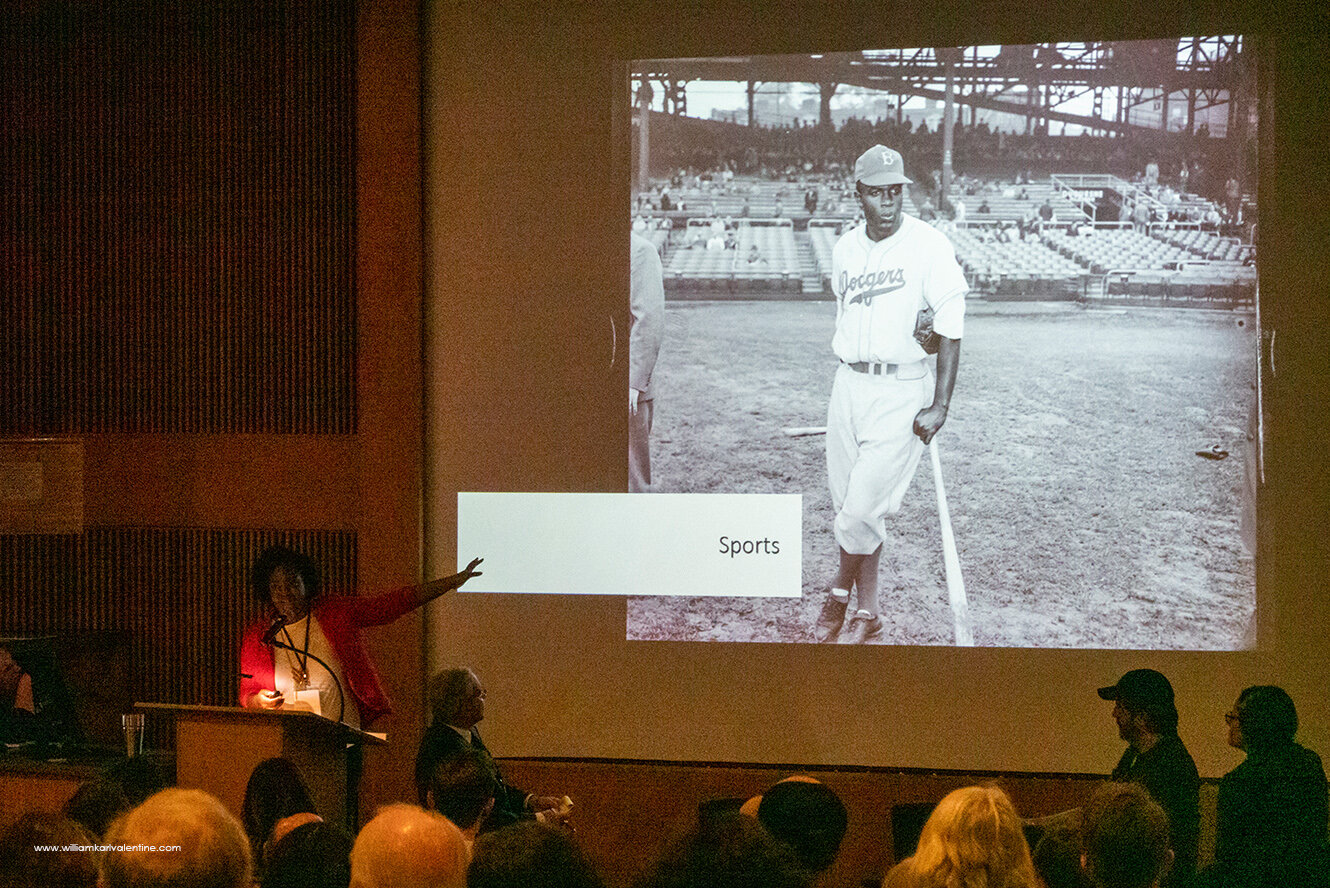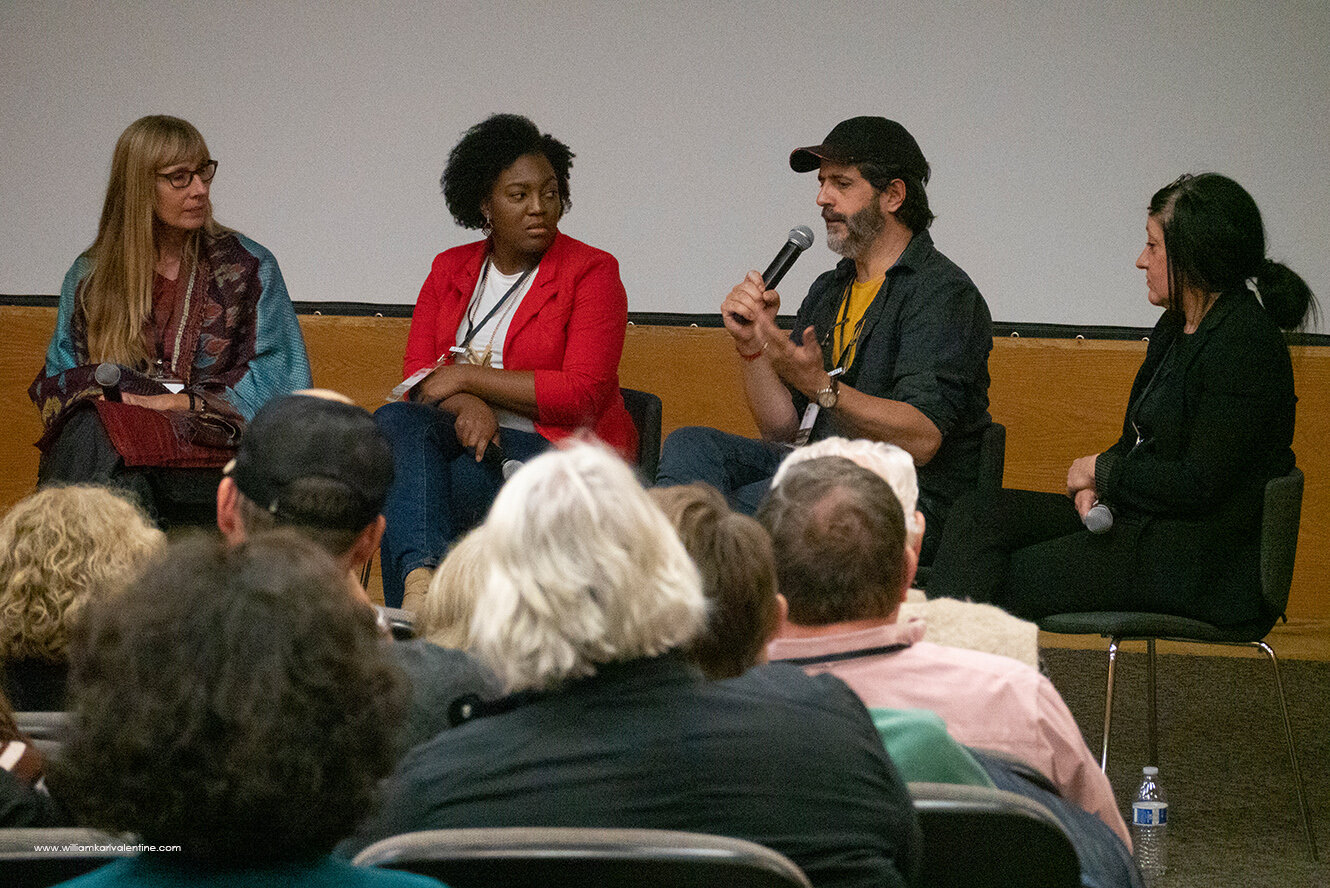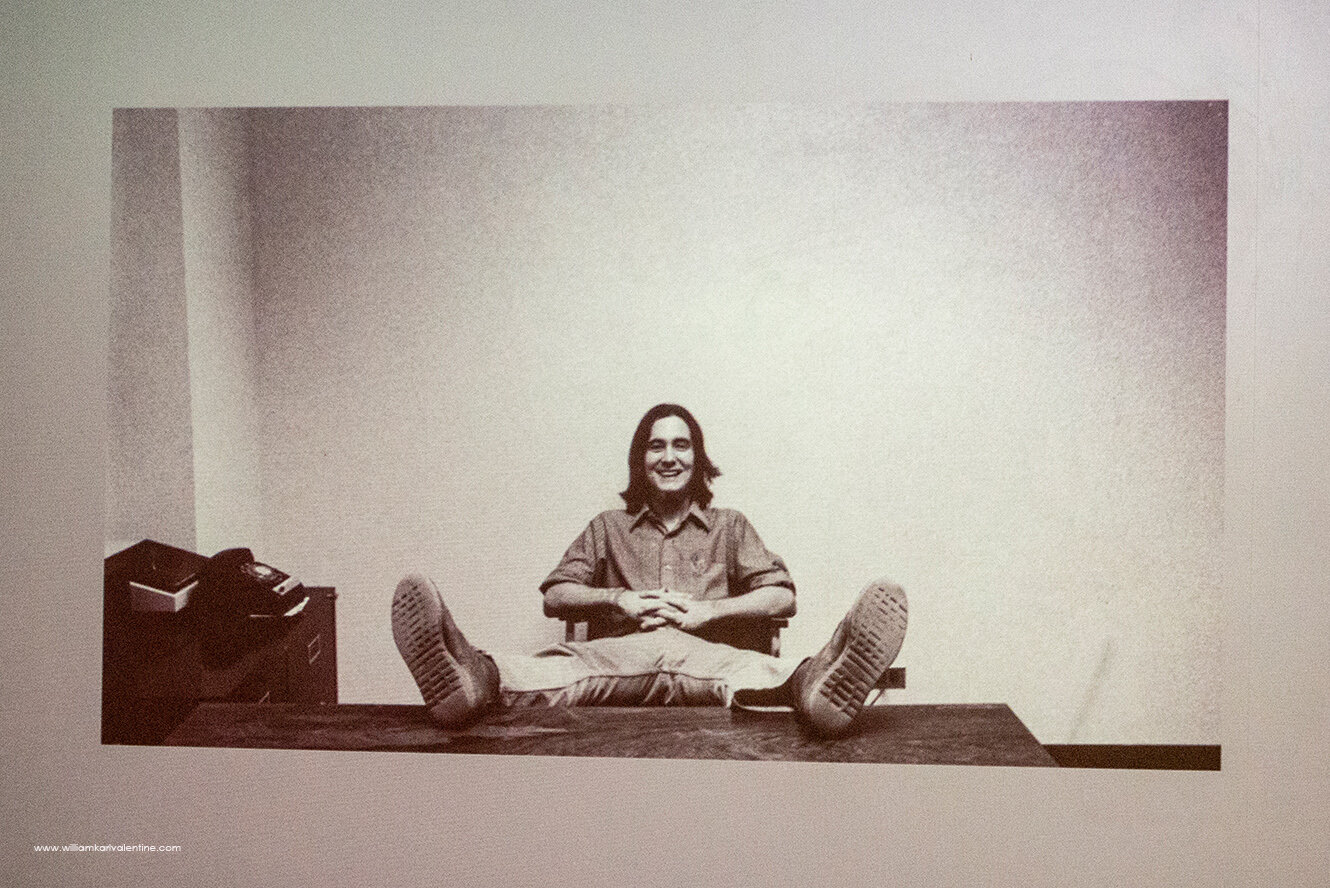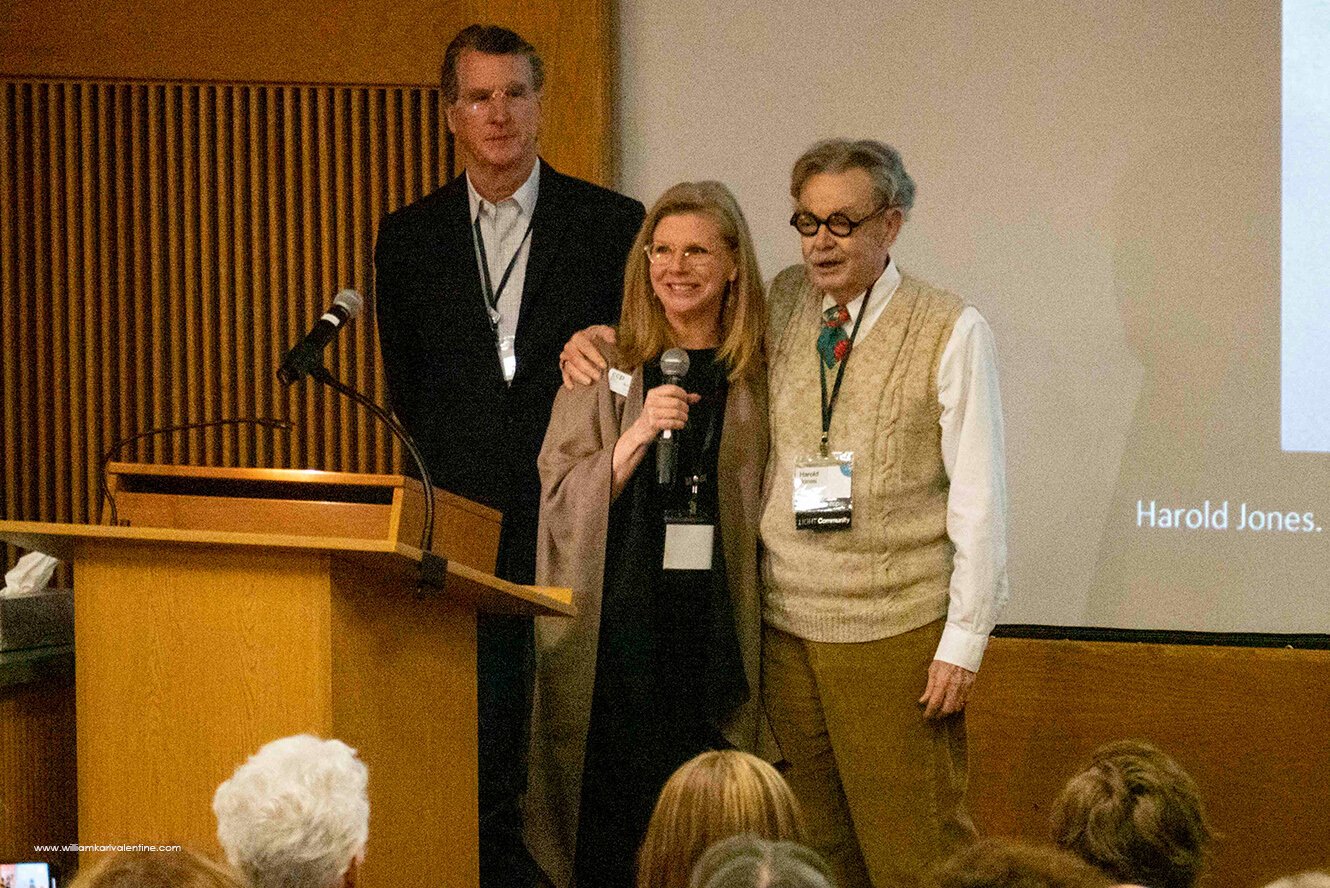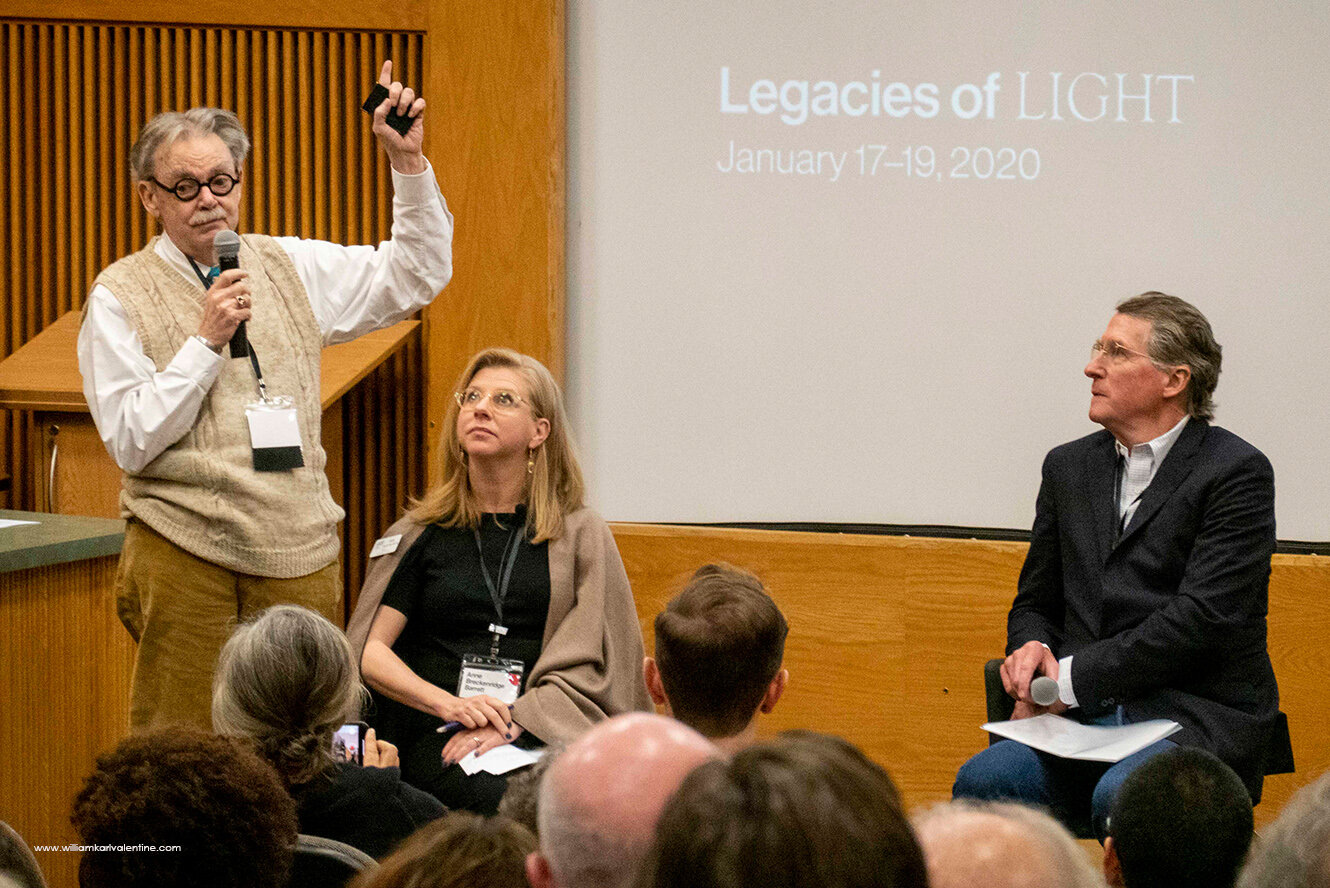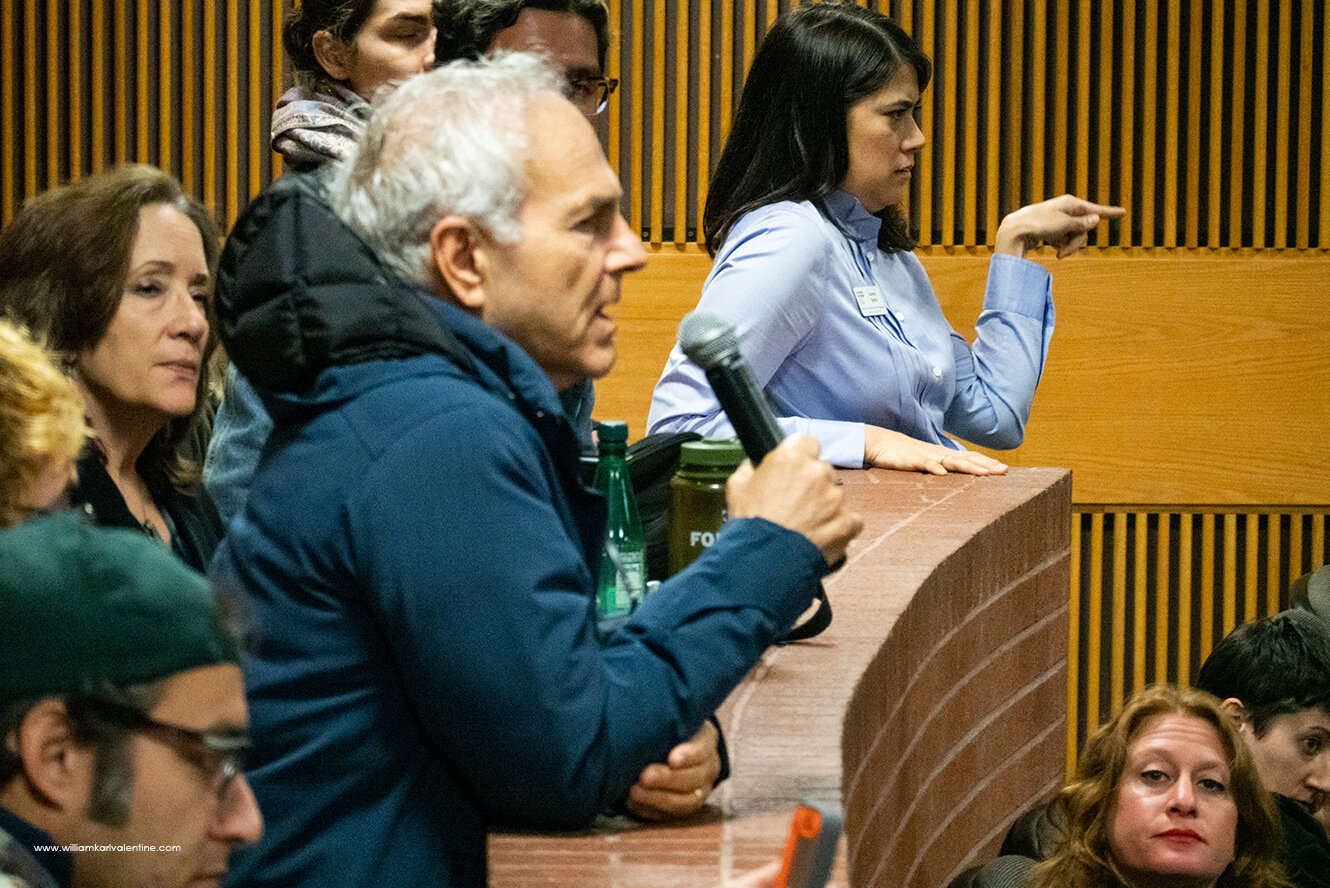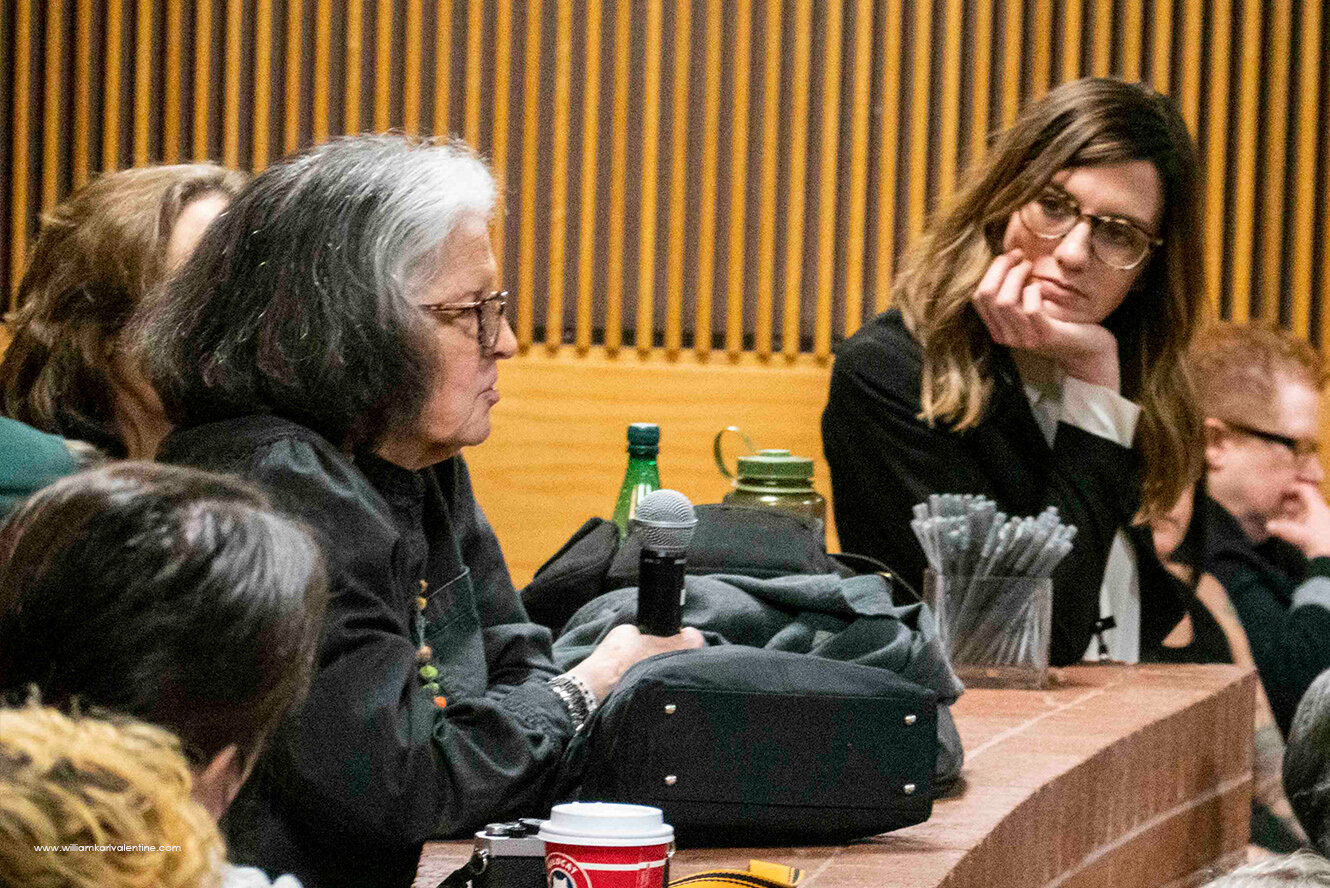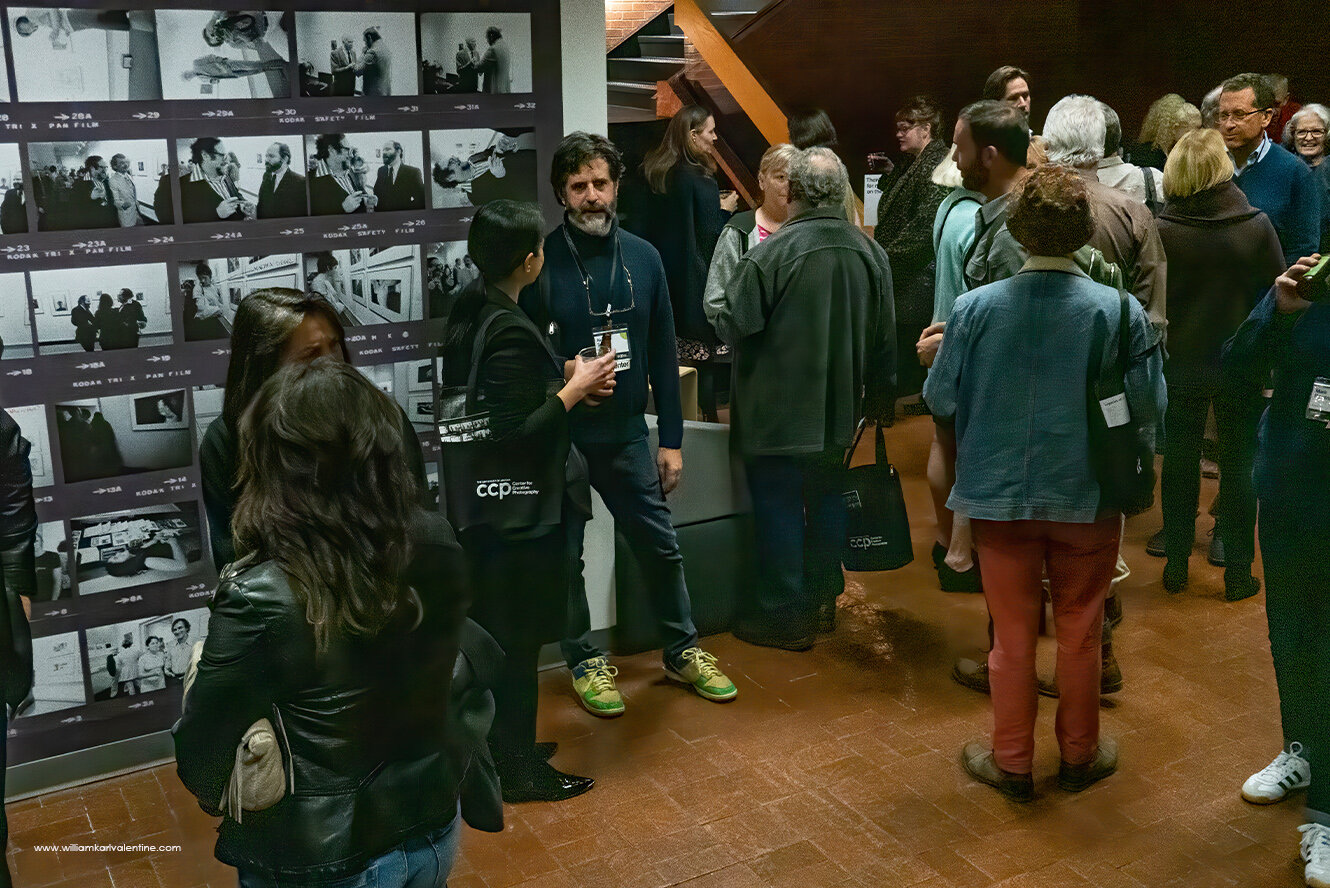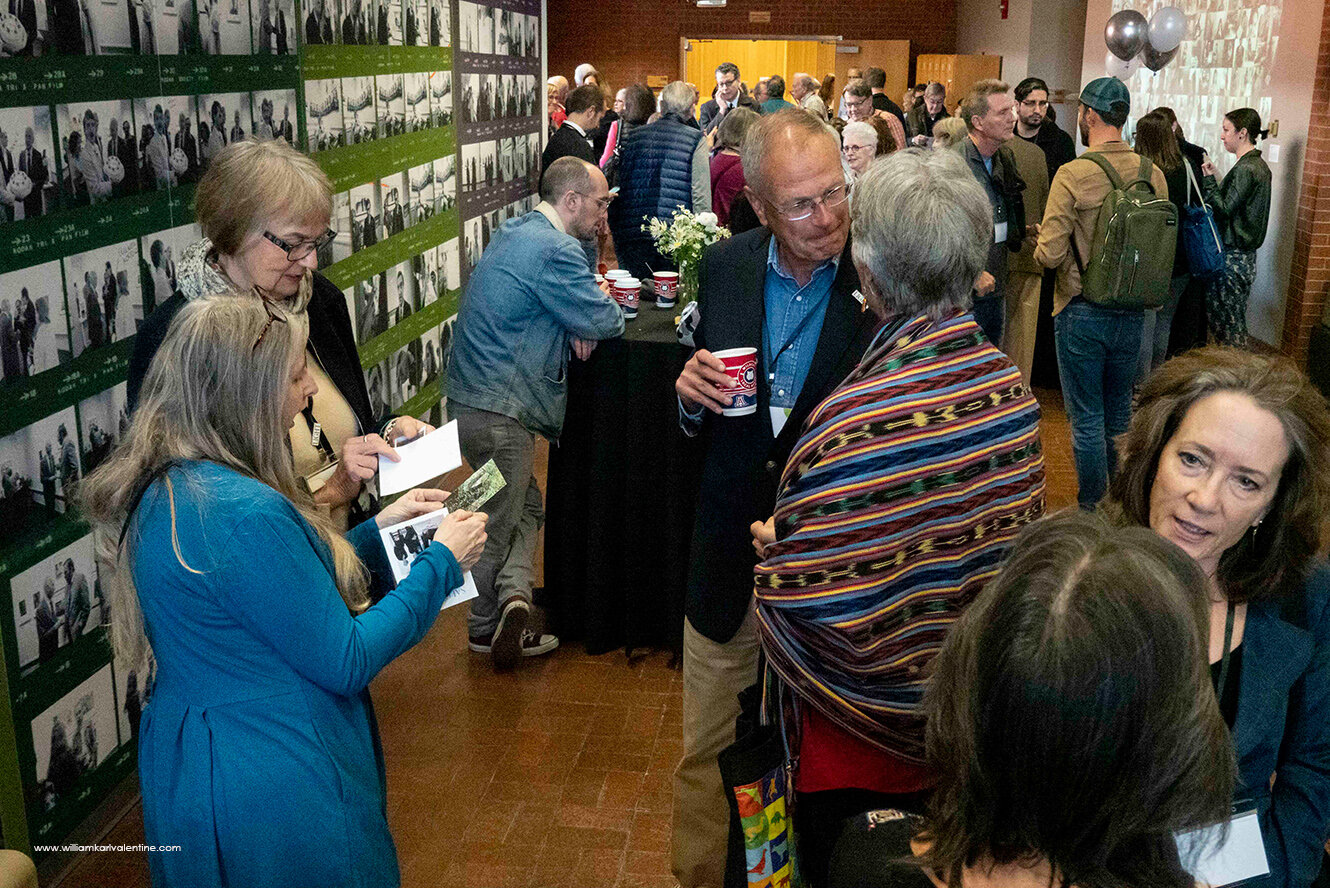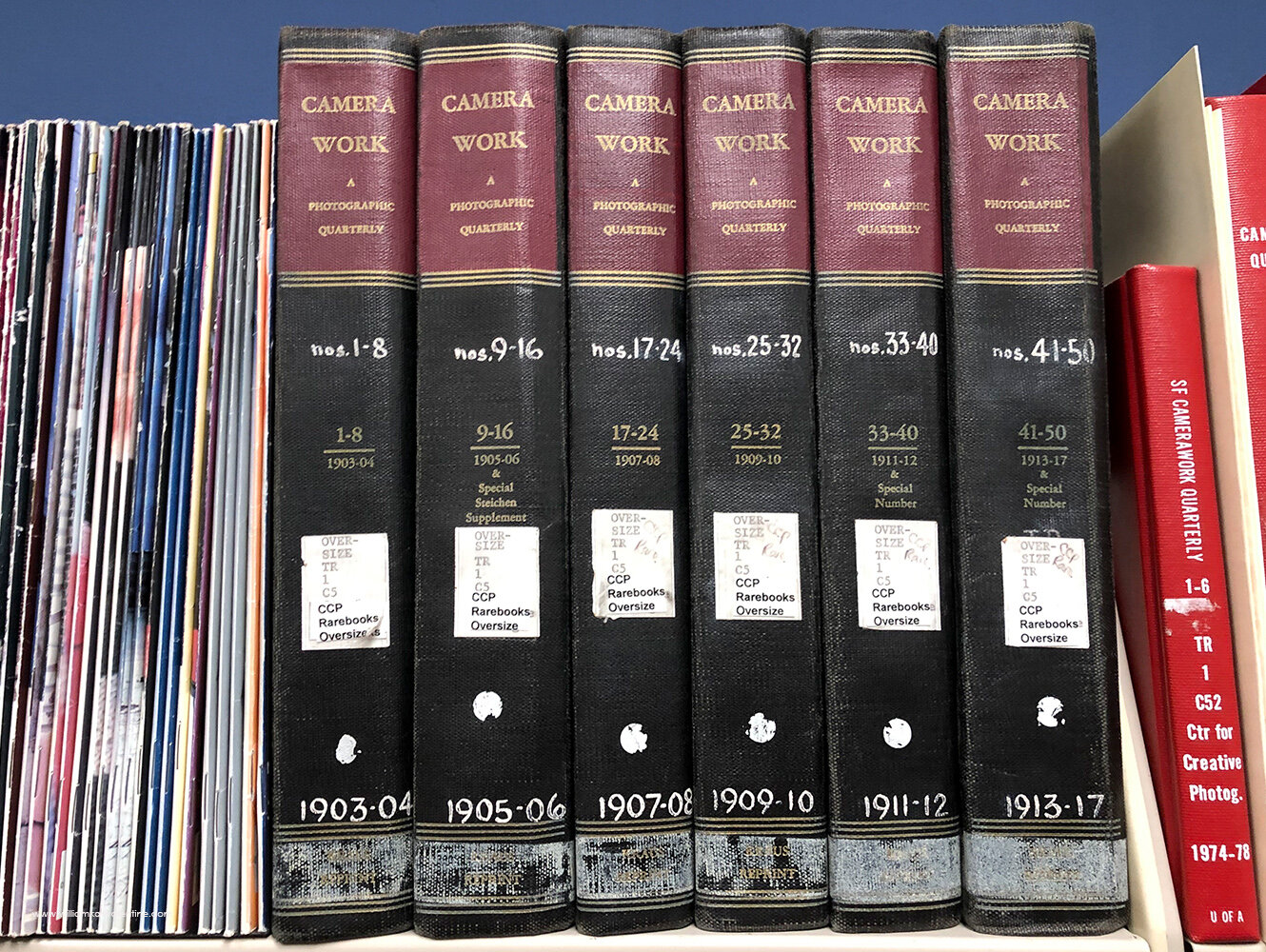The CCP describes the Qualities of LIGHT exhibition as this: “The Center for Creative Photography’s exploration of LIGHT Gallery is an institutional history that investigates the impact of this commercial space through its role in the larger community.”
When I attended the opening in December, I saw the description was accurate. It’s a unique exhibition in how it recreated certain physical elements of the LIGHT Gallery, displayed works of LIGHT’s artists, had a component for highlighting emerging artist of today (an important function of LIGHT back when it was open), and was able to show how important this gallery was to the history of the medium. One of the most impressive elements for highlighting the impact LIGHT had on photography today was Curatorial Assistant Adam Monohon’s brilliant concept of creating a line map showing the connections of so many important photographers, curators, and photography institutions back to LIGHT gallery. The exhibition also has so many cool interactive elements which I documented in a separate post. I had no idea that so many of the people who effected my growth as a photographer were linked back to LIGHT in some way. I think the entire exhibition really does well to capture the spirit of LIGHT and that time period.
Another important aspect of the exhibition is to highlight the connection between CCP and LIGHT. Harold Jones was the first Director of LIGHT and his vision set the course for the galley. Harold left LIGHT to help with building the Center for Creative Photography and the Studio Photography Program at the University of Arizona.
So this blog post is about the “Legacies of Light” symposium which was held in January at the CCP in conjunction with the exhibition. I signed up for the symposium as soon as I learned of it after having my work included in the exhibition. I thought it would be a good experience to learn more about LIGHT’s history and to have an opportunity to interact with so many people involved in photography. I was blown away with the experience of this symposium, it far and away exceeded my expectations.
Here is a link to the description of the speakers and the subject matter o the “Legacies of Light” symposium on CCP’s website. It is the best way to accurately describe the event in detail.
Another great resource is this link of CCP’s videos of the symposium: https://www.youtube.com/channel/UCRnlWp7M-YuVQY_okRmQmGA .
Now for my impressions. While attending the Legacies of Light I quickly realized one of the symposium’s primarily goals was to document the history of photography’s evolution to becoming a recognized as fine art. The people connected to LIGHT, many of whom attended the symposium, played so many important roles in photography’s rise in status within the art world. The symposium also talked about the current state of the photography community and our future. Everything was so well done by Anne Breckenridge Barrett, Rebecca Senf, and the entire CCP staff. There is so much to cover I will just jump in and start talking about the weekend and hopefully all my notes and recollections are accurate.
Things started Friday with small tours of the CCP facilities (I covered that experience in this linked: blog post) and a Keynote speech by Britt Salvesen who is the Curator and Head of the Wallis Annenberg Photography Department at LACMA. She gave an overview of LIGHT’s impact on the development of fine art photography followed by a panel discussion with Fern Schad and Charles Traub about LIGHT. Fern owned LIGHT with her husband Tennyson. She had an early interest in photography and had worked for Bill Jay in England before coming to the US where she spent time as a picture editor for LIFE magazine. Tennyson was an attorney who had the vision for the gallery and supported it financially. Traub spent time as a Director of LIGHT gallery and later was instrumental in establishing The Museum of Contemporary Photography in Chicago. He is also an established photographer an educator. I was fascinated by how much effort went in to establishing the gallery and maintaining it.
Saturday began with two former LIGHT employees Marvin Heiferman and Sally Stein reminiscing about the gallery and the atmosphere of New York in the 1970’s art world. Marvin spoke about how he learned to “see” pictures at LIGHT. He said Harold Jones taught him to “Just look at stuff” and to learn by the experience of looking. He went on to explain how he came to understand what pictures communicate to viewers. This really resonated with me because I feel too many people today don’t take the appropriate amount of time to actually look and experience images, we live in an Instagram world of the two second page view then “Like and Swipe”. Marvin gave examples of how photography wasn’t always accepted as art then. He remembered how a New York Times art critic had told Harold that photographs were not art. He also remembered an occasion when a woman accidentally got off the elevator on their floor while looking for another gallery He said she stepped off the elevator looked down the gallery wall at all the prints and stated “Oh photographs…” then stepped immediately back on the elevator. Marvin said Weston Neff and representatives from the Fogg Museum at Harvard would come in to the gallery but MoMA’s John Szarkowski would not, speculating because he didn’t want to acknowledge there was another “game in town”. Sally spoke to how the gallery struggled financially to survive.
Michal Raz-Russo, who is the Associate Curator of Photography at the Art Institute of Chicago spoke next of her Master’s thesis research about LIGHT gallery. She talked about how LIGHT was innovated in how they presented work, specifically hanging rows of images in grid form which hadn’t really been done before. She described Light’s 1972 exhibition of Stephen Shore’s “American Surfaces” which was shown three rows high and taped to the wall (No installation prints from this exhibition survived) and the 1975 exhibition of Garry Winogrand where LIGHT displayed over 100 of his prints behind glass and “L” hooks on one wall. Michal said Harold Jones used the grid style to try and show how Winogrand approached photographing: “Rapidly and Quickly”. It was fascinating to learn this because I can see the impact on some of the exhibitions I have seen. Most notably the Pier 24 Gallery exhibition where Winogrand’s complete “Women are Beautiful” series was displaced in a grid in one room while Stephen Shore’s prints were in another room. I can also recall MoMA, MFA, The Milwaukee Art Museum, The Art Institute and other institutions using grids in fantastic exhibitions, so I found it interesting to know where the possible origins of these designs came from.
Andy Grundberg spoke next on the evolution of photography as an accepted art form and LIGHT’s important involvement in that process. For those of you reading this who aren’t familiar with Andy he is possibly photography’s most well known art critic and the author of numerous great books on photography. He has written for the New York Times and is also a professor at the Corcoran School of the Arts and Design at George Washington University. Andy was in New York City during this period and summed it up perfectly when he commented “I was a witness of photography at its most incredible time, the 70’s and 80’s”. I loved hearing him describe the New York scene like the print bins at The Witkin Gallery and studying under Lizette Model at the New School. I am also interested in upcoming new book, How Photography Became Contemporary Art because I understand there was considerable focus on LIGHT gallery’s impact.
Becky Senf lead a Q&A panel session next which focused on the history of photography and LIGHT’s impact. In summary they acknowledged how prior to the Witken Gallery and MoMA showing photographs that photography magazines and publications were the primary source for people to see good photography (way different than today’s Instagram era). They spoke how Winogrand and other photographers all got their start with photography-based magazines. Fern Schad, LIGHT’s co-owner, brought up how LIFE magazine closed in 1972 with the advent of television news, and how images on TV are fleeting. The panel spoke of Susan Sontag’s writing on photography and John Szarkowski’s catalogues at MoMA and how photography began to be looked at for its artistic value and not just a means of describing news. Michal Raz-Russo added to that saying that some Photojournalism is now starting to be accepted as artwork.
The panel recognized the important influence entities like The Society of Photographic Education, The George Eastman House, The ICP, National Geographic, The Visual Studies Workshop and others had on the medium. They also identified that the 1970’s were really when much of the movement occurred; in example the first formal photography department was at the Art Institute of Chicago in 1974. Becky Senf then pointed out something very important when she said “It’s remarkable how much (photography) history from the decade of the 1970’s isn’t documented.” Becky’s comment came in to focus for me more and more as the weekend went on. I realized the symposium was really focused on preserving photography’s history while it was still possible to get it firsthand from people who were part of it. Looking around the room there were so many icons from the industry and I knew because of reality of their ages that this symposium was most likely the last time you would have so builders of the medium together in one room. I also realized that with all my previous history of photography courses the focus was primarily on the photographers. Yes, Beaumont and Nancy Newhall were recognized, and we used their textbook, and we were taught about Stieglitz’s influence but most my knowledge was on image makers. It makes since because I studied at Arizona State University in the mid 1980’s when this New York scene was still strong and the Center for Creative Photography was just getting started. For me personally it was very good to grow my knowledge of the medium. By Sunday I realized the symposium was not only exploring and documenting the history of the medium, and considering its future, but I think the symposium was becoming an historic event in the history of the medium itself by what was being accomplished there.
The afternoon session on Saturday began with a panel discussion “Engaging Community” moderated by Rick Wester. The first thing they focused on was how we define the photography community. ASU Professor, and current Society for Photographic Education President Liz Allen spoke about SPE’s formation in the 1960’s under Nathan Lyons. She talked about the changing landscape of education the challenges educators have now with colleges having fewer tenure tract professor positions. Dominique Luster who is the endowed Charles “Teenie” Harris Archivist at the Carnegie Mellon Museum of Art spoke about her role with the Harris archive. I was not familiar with Harris who was a Pittsburgh based commercial photographer who documented the African American community. It was highly interesting to hear the impact Harris had on documenting the history of his community with his camera and how their museum is keeping that legacy of community moving forward. Magnum Photographer Alec Soth spoke about once he had a photography career, he craved a community. Something I can related to after graduating from ASU and leaving behind the academic environment. For Soth he started blogging in the early days of social media and found a safe way to engage a photography community. Soth remarked how he now followed by over 100,000 people which he still is awe of considering how few comments he got on his earliest posts. He also mentioned the weekend of the symposium was the 10th Anniversary of Instagram and added the “Corporation of Instagram has taken over” how we interact with photographs. Rick Wester added insight from a gallerist’s point of view when he said “The Internet has replaced the experience with information, people are now getting information and want to get the experience to go with it.”.
Following up on the last two quotes, I want to again talk about a theme I heard throughout the weekend and mentioned above, that you learn about photographs by looking at them. Now this might seem like an obvious thing but it isn’t today. We now live in the age of the “two second page view”, where people scroll through Instagram, or any other social media platform, as fast as they can until an image catches their attention. Unfortunately these “lure images” are usually the ones which catch people’s attention (my term based on the concept of shiny fishing lures). Intense saturation, lots of post-production, or a trending subject. Many people are missing out because they aren’t spending time with images to experience them. One of the best exhibitions I saw recently was the Howard Greenberg Collection at the MFA last November. The prints in the exhibition were some of the best I have ever seen. But to get the full experience you had to spend time inspecting them, noticing details, and thinking about them. I walked through there exhibition twice to make sure I experienced it as well as I could, and if I could have gone back and seen it a second time, like I did the Warhol at the Whitney Museum recently I would have. Everyone I saw at the MFA was taking their time viewing the prints, it gave me hope.
CCP’s Meg Jackson Fox and Emily Una Weirich moderated the next session which was “Valuing Story”. I think the best way to describe this session was an exploration of how institution are preserving history in non-traditional ways; basically history used to be written in text books and now we are capturing oral traditions and digital forms of communication to preserve historical information. Cassie May – an Oral History Archivist focused on the medium of Dance, Molly Garfinkel – Managing Director of City Lore, Dr Matthew Grilli – Assistant Professor of Psychology at the University of Arizona, and Photographer Judy Natal were the panelists. Cassie, Molly, and Judy spoke about the projects and the process in their approach to documenting oral histories. It was interesting because they had diverse approaches and subject matter. They expressed the common theme that telling one’s story was important to create connections between people. Dr. Grilli then went on to examine what motivates people to tell stories, “The Why”. He said this motivation can change over time, often with younger people the goal may be to solve a problem while with older people the goal of story telling may be to teach, to inform, or to contemplate what may come to pass. They all agreed that documenting oral history is often a challenge because it is usually recorded in a long form manner which is hard to create sound bites from to be used in different ways of presentation. Several panel members also spoke of past problems they have with documenting oral histories and use rights. The panelists told of several stories where the original use release signed for an audio recording or filming for a specific project did not include wording in the release such “In all media for perpetuity”. The problem they have encountered is when they want to digitize the original oral histories and share them the original releases do not specifically authorize that and the interviewed persons are now deceased. Where it is obvious the person interviewed wanted to share their story, heirs have at times refused to grant new releases to use the materials in new formats.
Saturday concluded with a screening of Lisa Immordino Vreeland’s new documentary “LIGHT; When Photography was Undiscovered, 1971-1987”
Sunday started with a panel discussion about LIGHT from the perspective of people who worked there. Included in the panel were Peter MacGill, Laurence Miller, Rick Wester, Susan Harder, and Jack Sal. Its too hard to go in to all their comments, and this post is longer than I had intended already, but the thing I really came to understand listening to this group was an understanding of the atmosphere and energy of the LIGHT gallery. Susan Harder and Peter MacGill talked about handing them portfolios of photographer’s work and being sent out to museums across the country to cold call curators to promote photography as art and stir up business. They also told stories of going and staying with iconic photographers as they were preparing to exhibit their work at LIGHT and had so many funny experiences they shared. There is no doubt everyone involved with LIGHT helped pave the way for every photographer today. The panelists also accurately recognized how important the symposium was for recording the history they were part of because much of the knowledge of those days is on the cusp of going away with the aging of those involved. The final event was a celebration honoring Harold Jones who spoke along with several his close friends and family members.
Personally, I am still processing all the experiences of the weekend because it truly was an epic event. I believe this symposium, which was designed to document Photography’s history, will in fact be recognized in its own right as an historic event for Photography. The topic material from the symposium was fantastic but I more so I had so many valuable interactions with people, I am just thankful I was able to attend.
After-party Sunday at Mary Virginia Swanson’s home - Mark Klett and Peter MacGill - perfect finish to the weekend.













